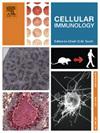The real-world impact of corticosteroid-associated adverse events in myasthenia gravis: A patient-reported survey analysis
IF 2.9
4区 医学
Q2 CELL BIOLOGY
引用次数: 0
Abstract
Background
Corticosteroids are crucial for managing acute exacerbation symptoms and preventing relapses in myasthenia gravis (MG) patients.
Methods
Between April 15–30, 2024, 2368 online self - report questionnaires were distributed. Eventually, 444 MG patients who had received corticosteroid therapy completed the survey.
Results
Self-reported adverse events (AEs) were observed in 97.5 % of the respondents. Among them, 72.5 % (322 patients) reported experiencing more than four AEs. The quality of life (QOL) of patients with MG was significantly impacted, with average MG-QOL scores of 18.07 ± 12.03. Patients with a cumulative dosage exceeding 20 g experienced the highest incidence of various AEs compared to those with lower cumulative dosages (5–20 g and less than 5 g). Additionally, a longer duration of corticosteroid exposure was associated with a higher reported incidence of AEs. Cox risk regression modeling revealed that a longer disease course, a history of myasthenic crisis, and the average daily dose of steroids (exceeding 5 mg/d), were independent predictors of corticosteroid-associated AEs. The study revealed in a single MG center, the awareness of these AEs was low among Chinese patients.
Conclusion
This study systematically assessed the incidence and risk factors of corticosteroid-related AEs in Chinese MG patients. The study found that the occurrence of AEs was associated with the cumulative dosage and duration of corticosteroid use. Additionally, long disease duration, a history of myasthenic crises, and an average daily dosage exceeding 5 mg/d are identified as risk factors for corticosteroid-related AEs in patients with MG.
在重症肌无力中,皮质类固醇相关不良事件的实际影响:一项患者报告的调查分析
背景:皮质类固醇对于控制重症肌无力(MG)患者的急性加重症状和预防复发至关重要。方法于2024年4月15日至30日,发放网上自述问卷2368份。最终,444名接受皮质类固醇治疗的MG患者完成了调查。结果97.5%的应答者有自我报告不良事件(ae)。其中,72.5%(322例)报告经历了4次以上ae。MG患者的生活质量(QOL)明显受到影响,MG-QOL平均评分为18.07±12.03分。累积剂量超过20g的患者与较低累积剂量(5 - 20g和小于5g)的患者相比,各种不良反应的发生率最高。此外,较长的皮质类固醇暴露时间与较高的不良反应发生率相关。Cox风险回归模型显示,病程较长、有肌无力危象史和平均每日类固醇剂量(超过5mg /d)是皮质类固醇相关不良事件的独立预测因素。该研究显示,在一个MG中心,中国患者对这些不良事件的认识较低。结论本研究系统评估了中国MG患者皮质类固醇相关不良事件的发生率及危险因素。研究发现,不良事件的发生与皮质类固醇使用的累积剂量和持续时间有关。此外,病程长、肌无力危象史和平均每日剂量超过5mg /d被确定为mg患者皮质类固醇相关ae的危险因素。
本文章由计算机程序翻译,如有差异,请以英文原文为准。
求助全文
约1分钟内获得全文
求助全文
来源期刊

Cellular immunology
生物-免疫学
CiteScore
8.20
自引率
2.30%
发文量
102
审稿时长
30 days
期刊介绍:
Cellular Immunology publishes original investigations concerned with the immunological activities of cells in experimental or clinical situations. The scope of the journal encompasses the broad area of in vitro and in vivo studies of cellular immune responses. Purely clinical descriptive studies are not considered.
Research Areas include:
• Antigen receptor sites
• Autoimmunity
• Delayed-type hypersensitivity or cellular immunity
• Immunologic deficiency states and their reconstitution
• Immunologic surveillance and tumor immunity
• Immunomodulation
• Immunotherapy
• Lymphokines and cytokines
• Nonantibody immunity
• Parasite immunology
• Resistance to intracellular microbial and viral infection
• Thymus and lymphocyte immunobiology
• Transplantation immunology
• Tumor immunity.
 求助内容:
求助内容: 应助结果提醒方式:
应助结果提醒方式:


